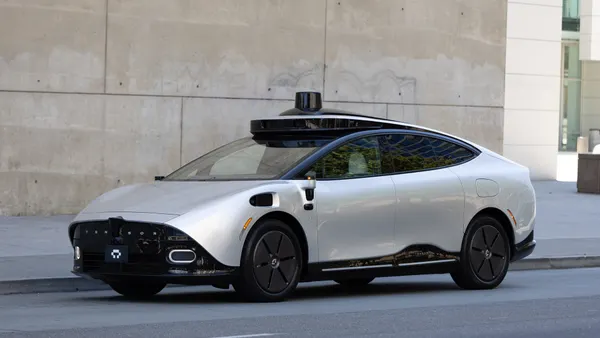Dive Brief:
- S&P Global Mobility estimates that global light vehicle losses related to pandemic-related semiconductor shortages have rebounded and fell to roughly 524,000 vehicles compared to 9.5 million in 2021, according to an S&P Global report Wednesday.
- Automakers are ramping up vehicle output in 2023 and have adapted their production schedules to compensate for the semiconductor shortages of 2021 and 2022, reducing production disruptions related to the shortages.
- But as demand for more advanced semiconductors is expected to increase as vehicles become more complex, it could impact automakers again.
Dive Insight:
Over the past two years, automakers were able to command higher prices for popular models and allocate chips to higher-margin vehicles, S&P Global said.
"We are now in a position where the auto industry has adapted to a constrained supply, and as a result is much less likely to be hit by significant disruption," Mark Fulthorpe, S&P Global Mobility executive director of global light-vehicle production, said in a statement. "With the current semiconductor supply levels, we estimate that 22 million units of global light-vehicle production per quarter could be supported."
However, in 2019, before the pandemic-related supply chain disruptions, S&P Global Mobility forecasted that global vehicle sales and production would exceed 100 million units as early as 2022 after trending upward and reaching 97 million units in both 2017 and 2018.
The June 2023 S&P Global Mobility forecast shows production and sales reaching 83.6 vehicles this year, well below its original 2022 prediction. Now reaching the 100 million mark will not likely happen until at least the end of the decade as vehicles become more complex, according to S&P Global analysts.
Newer vehicles, including electric vehicles, have more complex electrical architectures, domain controllers and specialized chips to support such features as advanced driver assist systems, autonomous driving functions and connected infotainment systems. Therefore, demand for more advanced semiconductors is expected to rise in the upcoming years, which could again impact vehicle production.
S&P Global notes that the higher complexity of vehicles does not change the overall number of semiconductors needed. Instead, it changes the mix of the types of semiconductors that automakers require. That may impact supply over the next several years, depending on how many needed chips are produced. But the industry impact is difficult to predict, according to S&P Global.
In addition, the value of semiconductors used in vehicles could increase from an average of $500 per car in 2020 to $1,400 by 2028 due to vehicles becoming more complex.
"We've moved from obvious disruption, clearly visible at the automaker and plant level, to a stage where we know constraint remains, but it is impossible to identify," Fulthorpe said.
Another challenge for automakers, according to S&P Global, might be to rethink how to manage their inventory versus balancing demand, including offering incentives and allocating more chips to their high-margin, feature-rich vehicles. Demand still exceeds the supply of several chip types, according to S&P Global.
Despite the auto industry’s recovery in 2023, S&P Global warns that ongoing geopolitical trade tensions between the U.S. and China could also lead to future semiconductor disruptions.
S&P Global estimated these losses by comparing original equipment manufacturer announcements with its estimates of production volumes during the same timeframes.














